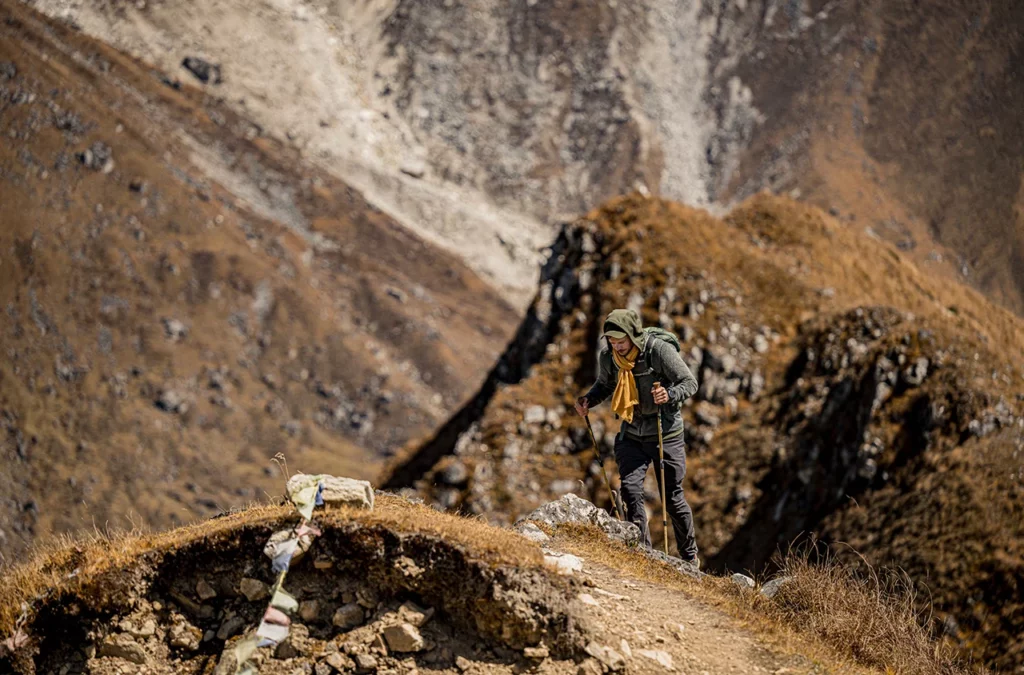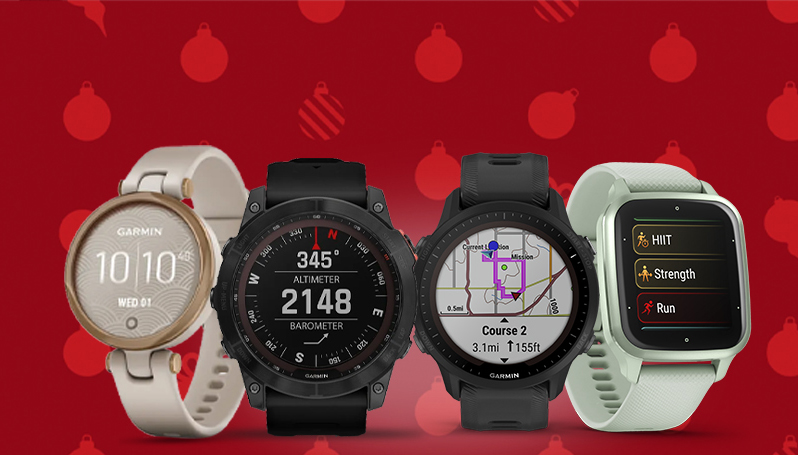7 Days Out with fēnix, according to Wes

9 April, 2024
When Garmin notified me that I’d be going to Nepal to trek the Langtang Valley, I assumed there was a typo in the email address. Surely, they had the wrong guy. Much of my adult life, I’d found regular suburban living to be physically challenging due to a diagnosis of ankylosing spondylitis in my mid-twenties. Now, just six months into my 40s, I was going to travel across the globe to do the hike of a lifetime?
Most of my friends didn’t believe me — the ones who’ve known me the longest were the most suspicious of the trip because they’d seen me through years of physical therapy and prescription treatments of varying effectiveness. Everyone else thought it was some kind of a joke I was telling them.
There was no typo in that email, and there was no joke.
I consulted with my doctor, and his positive feedback about the therapies I’d been pursuing to keep my arthritis under control made me realise that I was really going to do this. I was going to Nepal1.
I’d been using the fēnix® to help monitor simple stuff like daily step count, twice weekly Pilates training and the quality of my sleep, but I knew I’d need to take a new look at the features if I was going to begin training for the trip.
Within a week, I was out of breath and feeling like I was going to vomit in the Verdugo Mountains. Around 1,600’ of elevation and 95 degrees Fahrenheit sunlight, I was soaked with sweat and overlooking downtown Los Angeles in the distance. My training had begun.
I quickly became an expert at elevation reading via my watch screen, monitoring my heart rate to make sure I didn’t push myself to the point of exhaustion2, and even timing recoveries to avoid any serious injuries. My Pilates trainer developed a program to target my weakened legs and stabilise my core to help prepare me even further.
Despite all this, I harboured a vague sense of it being an impossibility even as I climbed out of the car at Los Angeles International Airport a couple months later. It wasn’t until I got to meet Joel during our layover in Dubai that the reality of this life-changing experience finally hit me.
Joel is exactly the kind of guy you want to tag along with on an awe-inspiring adventure like this. He has a genuine nature about him that even a language barrier can’t suppress, has a knack for finding subtle beauty in the most challenging experiences and is always willing to politely laugh at a joke (no matter how lame they were when I made them).
I could see my excitement about the trip, and my anxieties about being thousands of miles away from my little growing family, reflected in Joel’s face. We spent our first few hours sharing pictures of our toddler daughters and swapping stories about how important being a dad is in our lives. As it turns out, being able to lean on someone for support when you’re on the other side of the globe from everyone and everything you know isn’t something you can simply throw on a packing list. Clearly, Garmin had put some thought into pairing us up for this trip.
There’s a lot about Nepal that you just can’t know until you’ve actually been there. I ran into this time and time again when I was doing my research before we arrived. And, if you’re reading this with the hope of achieving a deeper understanding of the place, you’re going to be let down.
Living in the shadow of the largest mountains on the globe has made Nepal a place that, throughout written history, has been spoken of with reverence. Subtleties of the Nepali cultural personality pervaded every interaction I had when I was there, and even with months of processing the experience, I’m still not able to fully explain it.
While we were in Kathmandu, trying to shake off the jet lag, Joel and I got to tour the Swayambhunath Stupa with its hundreds (thousands?) of monkeys before we headed into Durbar Square. The city, it seems, had surprises around every corner.
While in Durbar Square, we followed a crowd and found ourselves in line to see the living goddess Kumari at one of her rare public events. I failed to see the significance of this initially, but absolutely felt the atmospheric shift in the crowd as she peered down at us from her pedestal overlooking the atrium in the Kumari Ghar, her home.
It’s hard to overstate the cultural shock when arriving in Kathmandu from Los Angeles. And it was even more shocking when we left the city for the Langtang Valley. The teeming mass of humanity in the city was replaced by the quiet of a lush forest with a single path cutting its way along a river.
Joel and I were cautious when we started out, both of us very wary of altitude sickness having the potential to derail the entire trip. Garmin had mapped out the trek for us to avoid any complications, but we knew we wanted to be extra cautious. Even out of breath, we’d compare heart rates and check in with our altitude acclimation regularly.
Throughout the Langtang Valley are hotels and hostels every couple of miles along the trail. And none of them had any roads leading to them. I grew accustomed to stepping off to the side of the trail with regularity to allow porters carrying many multiples of their body weight on their backs, sometimes leading packs of mules loaded with supplies, to pass me on their way to these hotels. I thought of them every time I was overwhelmed with exhaustion, hauling my small day pack with me up the trail.
Nepal has a way of humbling you.
As the days passed, we climbed in altitude and the landscapes began to change. We traded the lush forests and bamboo groves for rugged landscapes and high alpine meadows. We passed small towns and other backpackers from around the globe. We saw families of yaks lounging in the sun and remote sacred sites of worship.
Throughout it all, I began to wrestle with the reality that the physical limitations forced upon me by ankylosing spondylitis may not have actually been as forced as I once assumed. When we took a day of rest to acclimate before our final climb to the peak of Kyanjin Ri, Joel and I had a long conversation about self-imposed limitations and how he’d been having similar thoughts about his own life.
It’s easy to get caught up in the complexities of modern life. It’s even easier to get lost in the details that come with every obligation you accumulate as you grow older. Remarkably, Garmin sent us to the other side of the globe for the hike of a lifetime and unintentionally provided us with a brand-new perspective on what it means to live in our day-to-day lives back home.
I’ll never forget that final morning as we climbed in the darkness to the top of Kyanjin Ri, the final destination of our weeklong trek. The only sounds I could hear were the hard breathing of our team, the crunch of frosted alpine grasses under our feet and the occasional sluff in the distance.
I was out of breath and feeling like I was going to vomit as we arrived at the highest summit of Kyanjin Ri. At 15,600’ of elevation and a windchill of 20 degrees Fahrenheit, I was shivering and overlooking the small town at the foot of the peak when I realised that we’d finally made it.
1 Garmin provided products to and paid expenses of Wes.
2 See Garmin.com/ataccuracy
Buy Garmin, get a gift
You have been waiting for this day for so long!We have valuable gifts for our costumers to make your holidays special.

Buy Garmin, get a gift
The conditions are simple. Make purchases of AMD 199000 or more and choose one of many possible gifts, such as JBL headphones, sunglasses, swimming goggles and so on.
And if your purchase is greater than AMD500000 you will get Garmin kids smart watch as a present!
